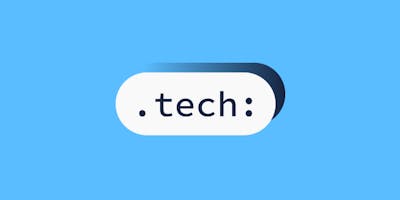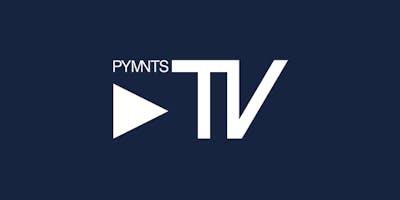How to Land Your Dream Remote Software Engineer Job 🚀
Remote working· 5min January 20, 2023
5 tips from Form3’s Talent Lead – Engineering Alexandra Forsberg
Who knows what the job market in 2023 will bring? What I do know is, software engineers remain in high demand, how we find new opportunities is evolving and the demand for remote jobs continue to outstrip supply.
To that end, whether it’s your first or 100th remote interview, make sure you have done everything in your power to stand out in a noisy job market!
So, without further ado, here are my five top tips to help you land that dream remote software engineering job in 2023;
✅ Build a strong personal brand
Yes, even software engineers need a personal brand! Sure, it’s self-promotional and (dare I say it) on the cringy side. But done well, it can open amazing opportunities.
Here are some ideas to get you started;
- Build a slick LinkedIn profile (more on that below)
- Create a personal website to showcase your experience
- Start and/or guest star on a tech podcast (e.g. Form3’s .tech podcast series)
- Speak at tech events (e.g. GopherCon)
- Attend tech meetups (e.g. Women Who Go)
- Create content on LinkedIn, Twitter, Instagram, Slack or tech specific platforms (engage and give back to the community)
- Contribute to the open-source community
- Write a book
- Create an online course (e.g. Terraform for beginners)
- Blog (e.g. https://adelinasimion.dev/)
Hey, a little self-promotion won’t hurt 😜 I promise.
✅ Optimise your LinkedIn profile
95% of hiring teams use LinkedIn. Whether you’re a fan or not, having a tip-top LinkedIn profile will pay dividends. So, fill out ALL fields and start attracting those dream remote opportunities.
Here is how you can build a strong LinkedIn presence;
- Profile picture. Aim for a great one (first impressions and all that!).
- Banner image. Choose one that feels like you! unsplash.com has got you covered.
- Location, education and industry. Easy ones.
- Bio. The “sticky” page. Tell the world who you are, what you do and what motivates you. Get your personality across here. Include systems, technologies and languages worked and would want to work with. Be generous with spacing, write in person and use your own voice. Include a call-to-action e.g. “email me on”.
- Experience. A brief description of your current role (technologies, size and scale of system(s), environment, key achievements) and at least two of your previous positions.
- Keywords. Ahh, the crème de la crème! This is how hiring teams source talent. Pack out your profile with as many keywords (i.e. tools & technologies) as possible. In the summary, experience, skills – go to town!
- Skills. Yesss! Great way to float up a recruiter search. You can have up to 50 (the more the merrier in my opinion). Get your friends to endorse you!
- Recommendations. This is a great tool to build credibility. Ask colleagues, ex-colleagues, friends and bosses! No shame here.
- Open to Work. Yep, us talent people love working with those actively looking for new opportunities Alternatively, select “Open to remote work” in the location field.
- Keep it up to date!
✅ Get familiar with remote job boards
These job boards are great places to start your search for remote engineering jobs:
- WeWorkRemotely
- Wellfound (formerly AngelList)
- Remotive
- Otta
- LinkedIn Jobs (toggle remote)
- Remoteok
- Breakoutlist
- Remote Rocketship
- Keyvalues
- Nodesk
- Remote4me
- Glassdoor (toggle “wfh” or “remote”)
- Gophers (Slack community for Go enthusiasts)
💡 Why not also Google “top remote companies” to get a good idea of who’s hiring for remote jobs. Follow, like and engage with your favourite ones! Finally, use remote work hashtags such as #remote #remotework #goremote #workfromhome #hiringnow #hiring #remoteculture #remoteworker #remotefirst #wfh #remotejobs #homeoffice. They work well on all platforms from LinkedIn to Twitter.
✅ Prepare for remote interviews!
Just as you would for onsite interviews. Remember, you only get one chance at making a great first impression.
Here is how to increase your chances of smashing those remote interviews;
- Notifications, off! TV, radio, phone, laptop - all the above. I mean it.
- Distraction-free background. Consider what's displayed behind and around you. The more neutral and clutter free the better.
- Reliable WiFi. Test it ahead of the interview.
- Camera. Set at eye level. Camera ON. Check the lighting (you don’t want to sit in the dark or have the sun behind you). I also recommend getting a good webcam.
- Headphones/Microphone. For a better video experience, invest in good pair of headphones with a built-in mic.
- Check the interview invite. Is it clear where, when and with whom the interview is? Ask the hiring team if you're unsure.
- Test the video link. Before (!) the interview. You don't want to click on the video link a minute before the interview and realise it doesn’t work on your laptop.
- Research the company. And I don’t just mean the “about us” page. The careers, investors, press and LinkedIn pages, the whole lot. Your interviewer – look them up on LinkedIn! Understand what technologies you’ll be working with. Be confident in explaining why you want to work there (and don’t just say because of the remote work setup).
- Create a cheat sheet. With questions you want to ask (interviews are a two-way street), points you want to get across and notes.
- Highlight your remote working skills. Tools aside, how do you work and collaborate remotely? Do you have experience with async communication? How do you maintain an excellent work/life balance? Finally, focus on results and output.
- Remote work questions to ask. You want to clarify whether the role is fully remote or hybrid as some job ads don't specify. You may also want to understand how the culture is maintained in a remote environment? What time zone you're going to work in? Do teams meet up in person? What remote perks are available?
- Practice, practice, practice! With yourself and/or a friend. It’s for sure worth practicing, especially for behavioural questions. Record and watch it back!
- Show up early. 2-3 minutes early is fine.
- Relax. You’ve got this 💪 Don’t be afraid to show your personality.
- Follow up!
✅ Pace your interviews strategically
For some, looking for a new job opportunity can be an exciting and rejuvenating journey. For others, it can be a daunting and stressful one. Also, your interview skills might be rusty, you may have multiple interviews on the-go, or both.
To track your interview progress whilst avoiding burnout, may I suggest you;
- Get a Calendly account. It will make scheduling interviews super easy.
- Create a spreadsheet for tracking your applications and interviews. You can include as much details as you like! Company, size, locations, fully remote / remote-first / hybrid, funding, roadmap, salary, perks, time zone of role, no. of interviews, interview stage, offers etc. Trello is also a good tool for this!
- Interview with your least preferred companies first. This is especially important if you've been out of the interviewing game for a while. Maybe also start early with companies that have longer interview processes?
- Once warmed up, crack on with the companies you're most excited about!
- Review your performance after each interview. What went well? What didn’t? What would you have done differently? Building in reflection time can be a rewarding process and it’ll help you become a great interviewee!
- Ask for feedback. Like in point 5, this will help you make those tiny but vital improvements.
- Avoid interview burnout. Take a break, switch up the time of the interviews, be kind to yourself, get support from family & friends.
- Remember that no interview is a bad interview. Even if you feel it didn’t go exactly how you wanted it to, it is all good practice and a learning experience 💜
✅ Leverage your existing network!
Before applying to that dream remote opportunity, get on LinkedIn and find out if you have any existing connections at that company. Companies love referrals and often have lucrative referral schemes! Go on, get that“in” 😉 Worst case scenario, connect with the hiring team and express your interest in joining their company. It’s a win-win!
There you have them, my top tips for landing your dream remote role in 2023! You might already be doing some or all of them, but hopefully there are a few takeaways that you can start to implement today. If you need any further advice, feel free to reach out to me!









 Back to Blog
Back to Blog

